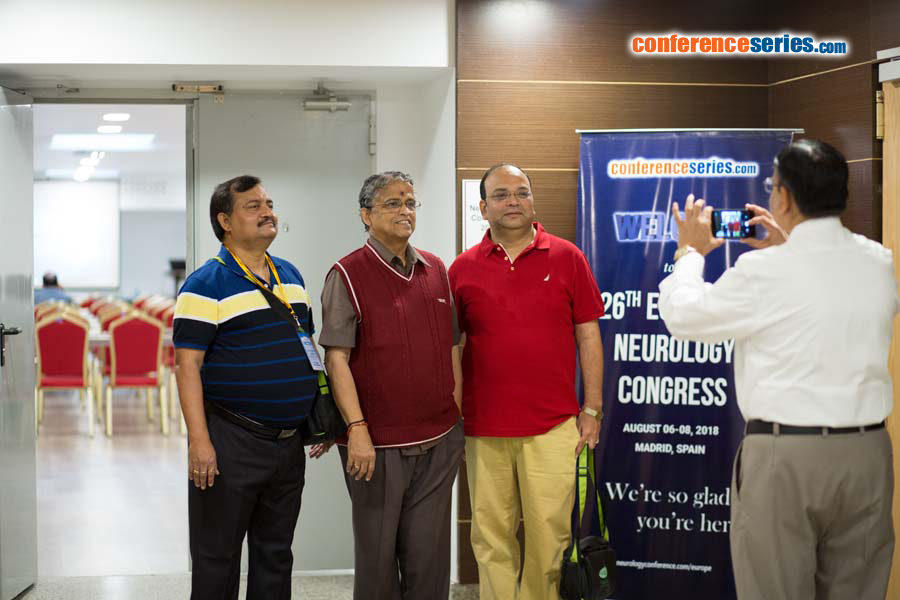
Avathvadi Venkatesan Srinivasan
Tamil Nadu Dr. M. G. R. Medical University, India
Title: Emergencies in movement disorders – An update
Biography
Biography: Avathvadi Venkatesan Srinivasan
Abstract
Kipps C M, et al. (2005) reported that movement disorders (MD) encompass disorders characterized by involuntary movements and/or loss of control or efficiency in voluntary movement. Fahn & Frucht (2002) defined movement disorder emergency (MDE) as any neurological disorder evolving acutely or sub-acutely, in which the clinical presentation is dominated by a primary movement disorder, and in which failure to accurately diagnose and manage the patient may result in signifi cant morbidity or even mortality. Based on this definition, MD emergencies are classified into six main divisions, which are: 1. Emergencies in Parkinson’s disease (PD): a. Parkinsonism-hyperpyrexia and dyskinesia-hyperpy rexia syndromes, b. acute parkinsonism, c. acute psychosis in Parkinson’s disease and, d. encephalitis lethargica; 2. Acute drug reactions: a. acute dystonia, b. neuroleptic malignant syndrome, c. serotonergic syndrome and, d. malignant hyperthermia; 3. Acute exacerbation of chronic MDs: a. status dystonicus, b. laryngeal dystonia in multiple system atrophy and other conditions, c. tic status and neurological complications of tics, d. Wilson’s disease emergencies, e. hypocalcemia, f. tetanus, g. strychnine toxicity and, h. rabies; 4. Acute chorea and hemiballism – hemichorea; 5. Stiff -person syndrome and; 6. Lethal catatonia. In this review, we covered situations in which the main manifestations are MDs that pose signifi cant risks for acute morbidity and mortality. Emergencies in MDs are not uncommon and they generally start insidiously and have slow progression. Neurophyscian generally diagnose and treat to prevent the acute and chronic complications in the intensive care units. Significant mortality and morbidity may be prevented if identified at the early hours and appropriate treatment started. In this workshop authors highlight the clinical conundrum of neuroleptic malignant syndrome. Doctoral thesis of this work has created a new AVS-CUV criterion of NMS which has been added to the world literature.
Recent Publications :
1. Robottom B J, Weiner W J and Factor S A (2011) Movement disorders emergencies part 1: Hypokinetic disorders. Arch
Neurol 68:567-572.
2. Moscovich M, Nóvak F T, Fernandes A F, et al. (2011) Neuroleptic malignant syndrome. ArqNeuropsiquiatr 69(5):751-755.
3. Munhoz R P, et al. (2012) Movement disorders emergencies. ArqNeuropsiquiatr 70(6):453-461.
4. Robottom B J, Factor S A and Weiner W J (2011) Movement disorders emergencies part 2: Hyperkinetic disorders. Arch
Neurol 68:719-724.



